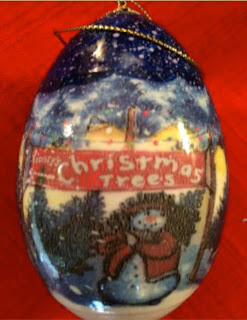We
all want good clean feed for our birds, but sometimes mold has a
tendency of appearing. Knowing what is dangerous, how to identify it,
and how to treat it is a priority should you come across a mold
problem in your feed.
The
mold itself is not what is harmful to your birds. It is the mycotoxin
byproduct that is harmful. It is a microscopic toxin undetectable to
the naked eye that is extremely poisonous in very small amounts.
Mycotoxins can have adverse affects on your birds including unusual
stools, deformed eggs, weight loss, a compromised immune system,
lesions on the body and internal organs and just general
unthriftiness and poor production. Unfortunately waterfowl are more
susceptible to mycotoxins than chickens or turkeys. Therefore, you
must be more vigilant in terms of mold.
Mold
and their resulting mycotoxins can develop anywhere in the production
process of the feed. It can start in the field where the grain is
grown and harvested. It can start at the feed mill where the grain is
ground and mixed into your feed. It can start while it is sitting on
the shelf in your local feed store. It can start where you keep the
feed once you buy it. The bottom line is there is no one definitive
place your feed can produce mold.
Prevention
is the best defense against mold. Mold grows best in damp and dirty
areas, therefore, keep your feed in places that are dry and clean.
You will have a harder time in humid climates to prevent mold, but it
can be done by being diligent in how and where you store your feed.
If
you buy your feed sacked, there is not much you can do other than buy
from a reputable source, keep it as dry as possible, and use it
within a month. You have much more flexibility, however, if your feed
is being made for you. Ingredients can be added to absorb mycotoxins
or kill mold and you can test your feed for mycotoxins before it is
fed.
The
most commonly added ingredients are aluminosilicates such as clay and
bentonite which bind the mycotoxins allowing them to pass through the
bird with minimum absorption. Newer additives include complex
indigestible carbohydrates from yeasts. These ingredients must be
added during the formulation of the feed to ensure it is uniformly
spread throughout the feed. Other ingredients like propionic and
other organic acids can prevent the growth of mold and resulting
mycotoxins.
Testing
of your feed for mycotoxins by sending samples to a lab is
recommended if you have a concern. You can also purchase kits that
you can use yourself to determine if your feed contains molds or
mycotoxins. These kits can be purchased from companies such as Bioo
Scientific, Romer Labs, or Charm Sciences Inc. Many of these kits
are quick and easy to use to detect common mycotoxins. If you are
purchasing truck loads of feed, you can test the feed before
accepting it from your supplier.
If you ever find mold growing on your feed, you need to throw away the moldy feed. Otherwise you are taking a great risk in feeding it to your birds. As stated previously, prevention is the best way to deal with a mold issue. Buy from a reputable company that tests for mycotoxins, keep your feed dry and use it within a month.




















































